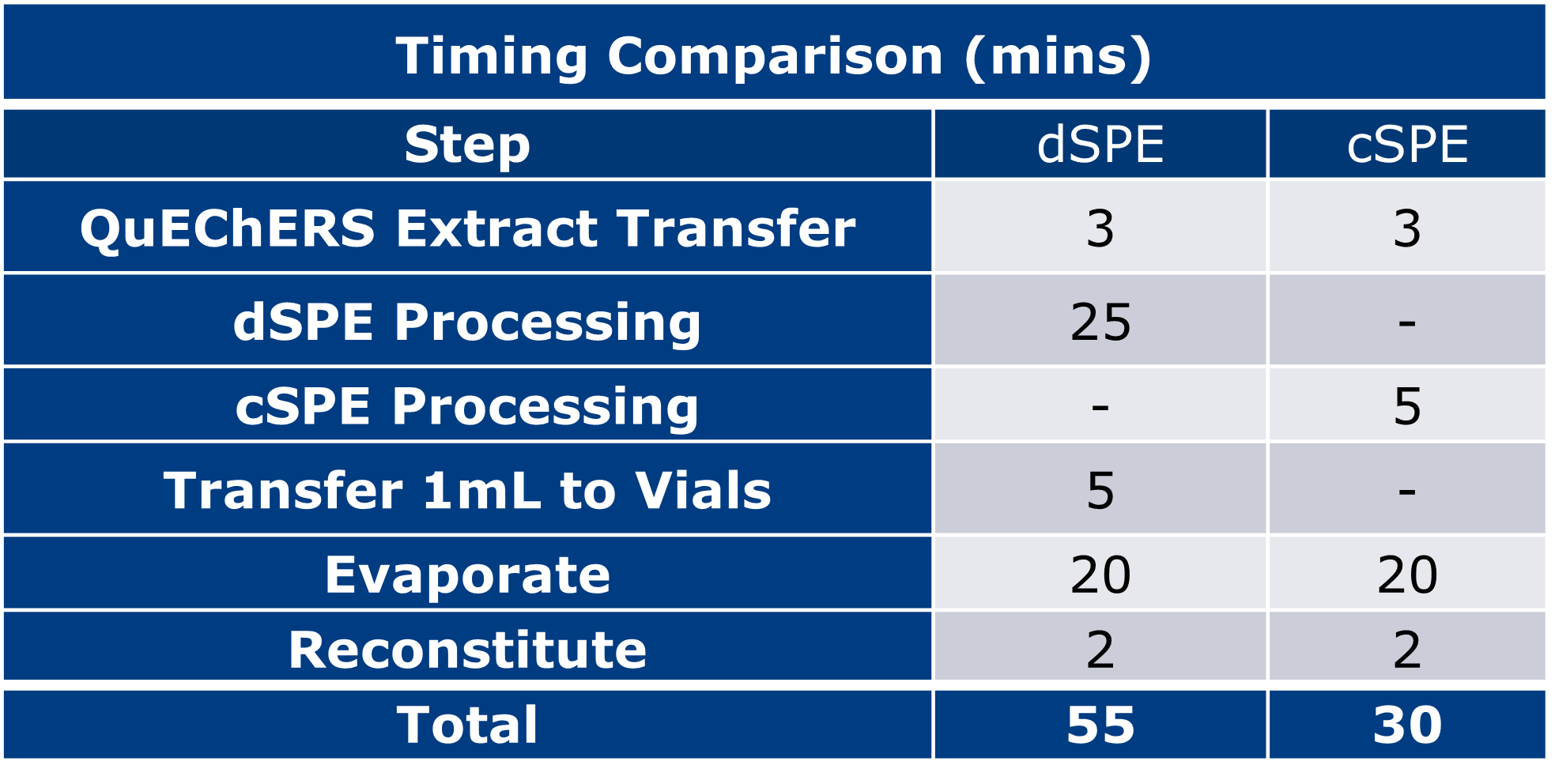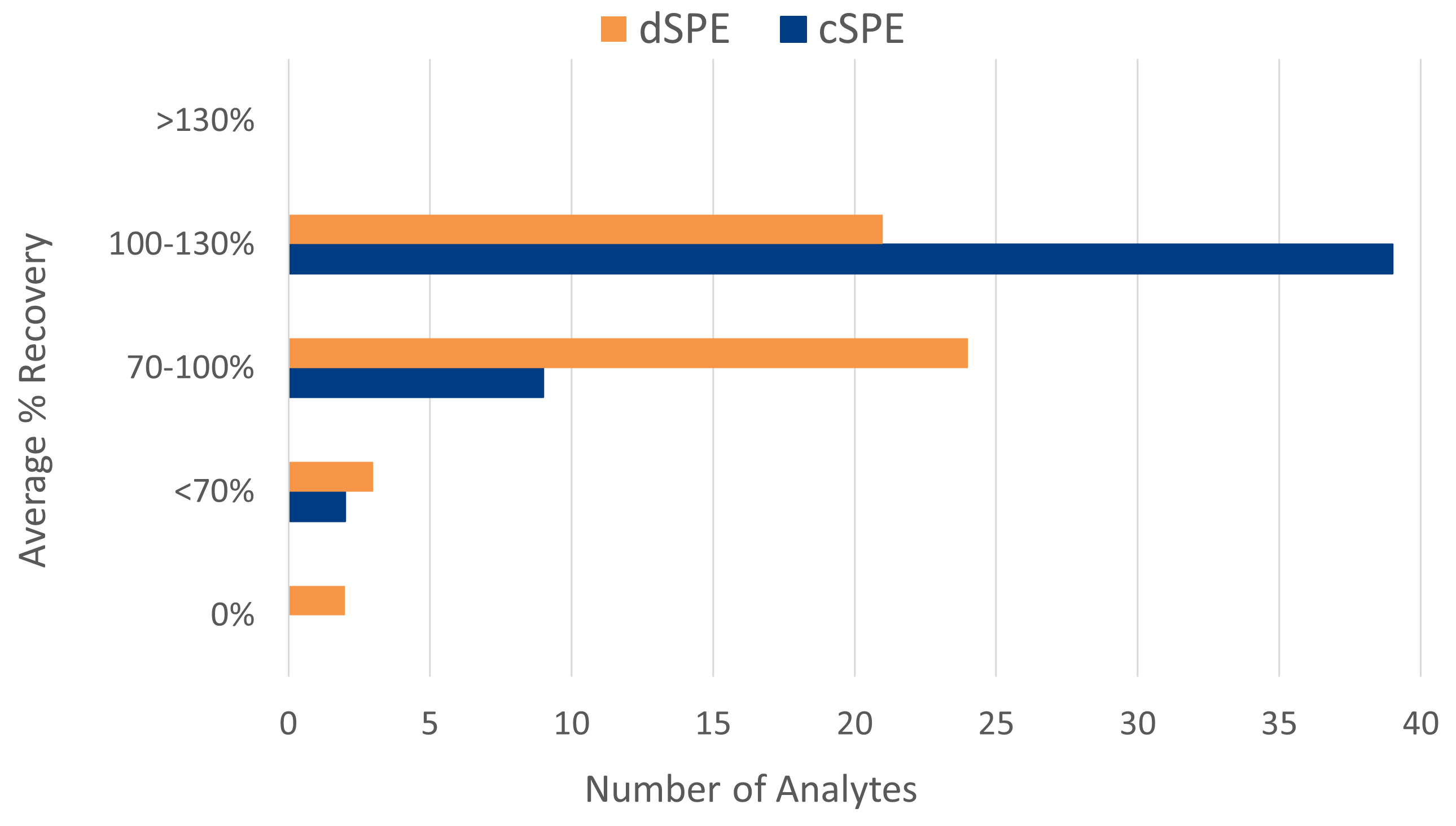Apr 12, 2023 11:03:46 AM
What Really is a QuEChERS Cleanup?
By Deanna Bissonnette

Who knew there were so many different parts to a QuEChERS approach! The nice thing about QuEChERS is even though there are a few different steps to capture your target analytes, they are all Quick, Easy, Cheap, Effective, Rugged, and Safe. Now, so long as this protocol is followed, you’re following the QuEChERS approach! Feel free to check out a previous blog about what a QuEChERS extraction is since the cleanup part of this approach is part two.So, after you’ve conducted a QuEChERS extraction of your sample, you will find that you have extracted out both the analytes of interest (pesticides, herbicides, etc.) and matrix components (fats, lipids, proteins, etc). These matrix components are often referred to as interferences since they interfere with the final analysis. We want to make sure we get rid of those matrix components, so we can accurately quantify the target analytes within the sample. Removing these components from the QuEChERS extract allows the analytical chemist to discern between analytes and interferences. Which brings us to the cleanup part of our QuEChERS approach.
There are a couple different ways that you can remove these matrix interferences from your samples, but your most common technique is dispersive Solid Phase Extraction (dSPE). The typical protocol for this technique is to take 8 mL of your supernatant (this is post-QuEChERS extraction and centrifugation) and add that to your cleanup tube which contains different salts and SPE media. Depending on your sample type, different ratios of dSPE medias are utilized to grab onto those matrix interferences leaving behind your analytes of interest. A good example of this is the addition of graphitized carbon black (GCB), which is typically used for removing chlorophyll from QuEChERS extracts produced from highly pigmented samples, such as spinach. You then take this tube, vortex (to ‘disperse’ the media) and centrifuge it and remove your aliquot for analysis. Seems pretty straight forward, right?
Now with this in mind, what if I told you there was another way? Yup! This other way is called pass-through column-SPE (cSPE) and it can provide more benefits over traditional dSPE cleanups for food safety methods such as multi-residue pesticide analysis. Conceptually cSPE works the same way as the d-SPE method, but when the QuEChERS extract is passed through the column containing the same SPE media (for example: ISOLUTE® cSPE for QuEChERS), your matrix interferences are retained by the media and the analytes pass through the media into your collection vessel. The nice thing about cSPE techniques is they can be automated. Yes, automated! You’re taking the already easy process of QuEChERS and making it even easier. Not only that, but with automation your cleanups can be done even quicker due to processing time and elimination of vial transfers. Check out the chart below here to compare the two techniques:
 The numbers don’t lie. With cSPE the QuEChERS cleaning process can be done in about half the time. Keep in mind too, that 30 minutes will have cleaned up 48 different samples with the Biotage® Extrahera™ HV-5000. With automation we know that results are usually more effective, rugged, and safe as well:
The numbers don’t lie. With cSPE the QuEChERS cleaning process can be done in about half the time. Keep in mind too, that 30 minutes will have cleaned up 48 different samples with the Biotage® Extrahera™ HV-5000. With automation we know that results are usually more effective, rugged, and safe as well:

Big takeaway here is that because you’re doing QuEChERS, that doesn’t mean you need to conduct the traditional way of cleaning up your extracts with the matrix interference removal salts and SPE media dispersed in the tubes. You have an alternative, like cSPE, that can be even easier, more efficient, and more rugged. This has been shown when comparing run times and analyte recoveries between dSPE and cSPE. In addition to meeting all of the same requirements as dSPE, automated cSPE cleanups are seen as safer because technicians don’t need to handle the solvents as much. So, whether you’re using dSPE or cSPE cleanups, as long as you follow the protocol of Quick, Easy, Cheap, Effective, Rugged, and Safe, you have yourself a QuEChERS approach!
To learn more about QuEChERS sample preparation for food & agricultural matrices download the food analysis brochure.
Published: Apr 12, 2023 11:03:46 AM


